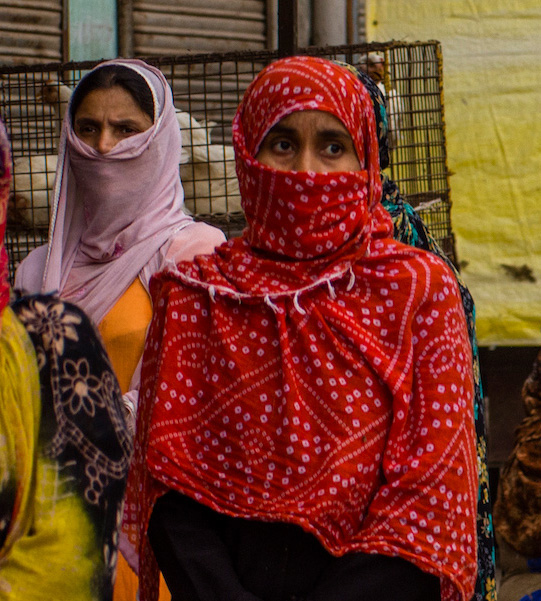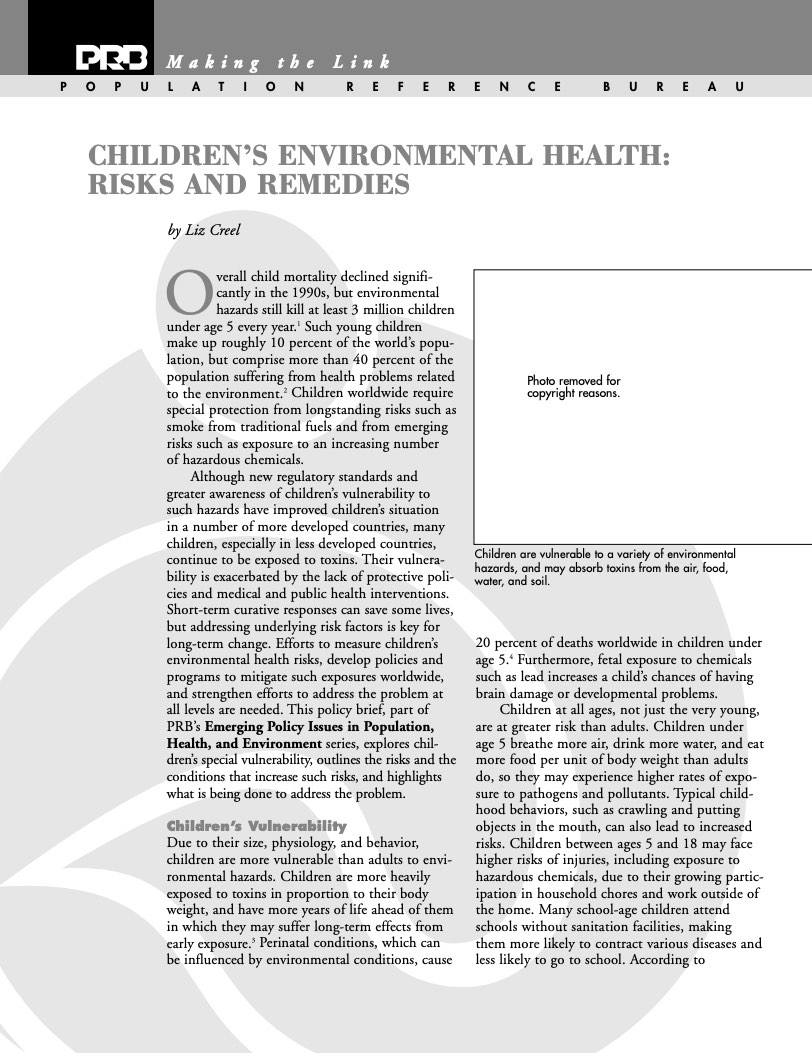Urbanization Takes on New Dimensions in Asia’s Population Giants
(October 2001) For the first time, more half of the world's population will be living in urban areas by the end of this decade.
(October 2001) For the first time, more half of the world's population will be living in urban areas by the end of this decade.
(2010) The Democratic People’s Republic of North Korea, one of the few remaining Communist countries, has demographic similarities and disparities with wealthier, democratic South Korea.

Project: PACE: Policy, Advocacy, and Communication Enhanced for Population and Reproductive Health
Holistic integrated solutions are key to address the interlinkages of the gendered impacts of crises.

(2002) Overall child mortality declined significantly in the 1990s, but environmental hazards still kill at least 3 million children under age 5 every year.1 Such young children make up roughly 10 percent of the world's population, but comprise more than 40 percent of the population suffering from health problems related to the environment.2
When the World Health Organization declared COVID-19 a pandemic on March 11, 2020, few sub-Saharan African countries had reported a single case of the disease, caused by the novel coronavirus SARS-CoV-2.

The conference offered researchers and practitioners a platform to discuss new work in 272 sessions and hundreds of poster presentations.

Korea must first address its gender issues, argues PRB President and CEO Jennifer D. Sciubba
(2010) Many developing countries adopted policies to slow population growth in the latter half of the 20th century in response to population growth rates that had risen to three or more times greater than those ever observed in industrialized countries.